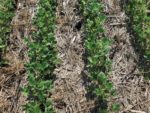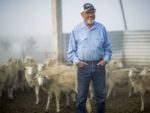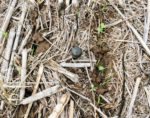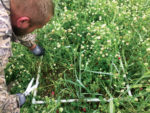Advertise Follow Us
Articles Tagged with ''grazing cover crops''
K-State researchers have found that grazing cover crops can improve soil health in no-till dryland cropping systems, addressing a key concern for producers in water-limited environments like the central Great Plains.
Read More
30 Years of No-Till Keeps Farm Financially Stable
Economic turmoil of the 1980s changed operation to 100% no-till, reducing labor, saving soil & enabling crop diversity
Read More
What I've Learned from No-Tilling
Equipment Changes, Cover Crops Prepare Soggy Soils for No-Tilling
Skip-generation farmer not afraid to try new methods & learn from failures
Read More
What I've Learned from No-Tilling
Efficiency, Diversification & Bold Cropping Strategies Put New No-Tillers Ahead
Jacob & Cassandra Kubik of Walker, Iowa, build on early no-till efficiencies & profits with relay cropping, innovative cover cropping practices & sheep.
Read More
Even in a Serious Drought, Soil Never Rests on No-Tiller’s Farm
Once-aspiring microbiologist pampers soil microbiome to push production.
Read More
No-Till, Cattle & Diverse Cover Crops Mix Well
The combination of a 3-way crop rotation, covers and grazing is resulting in big savings by reducing the number of tillage passes, increasing yields and improving soil health.
Read More
What I've Learned from No-Tilling
Focus on No-Till, Soil Health Puts Farm Problems Out to Pasture
Veteran no-tiller Terry Ness has found a focus on soil health and diverse rotations can mean reduced inputs and security in the face of weather, insects, weeds and disease.
Read More
Farming the Drought with No-Till Flexibility
Veteran Kansas no-tiller farms around dry High Plains weather, seeking to eliminate summer fallow when possible and using conserved soil moisture to grow something on every acre throughout the season.
Read More
What I've Learned from No-Tilling
No-Till, Cover Crops and Cattle Bring Revenue to Offset Tight Margins
Finding ways to extract more income from the same acres carves space for the next generation on this Illinois farm.
Read More














